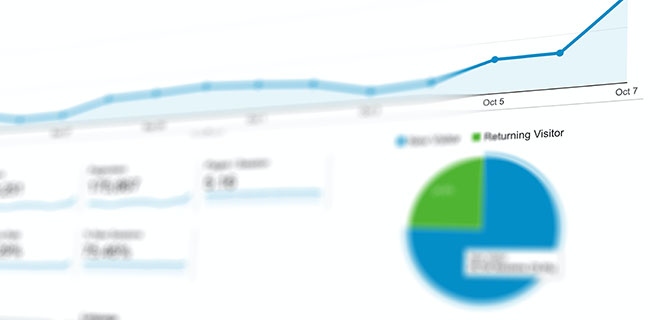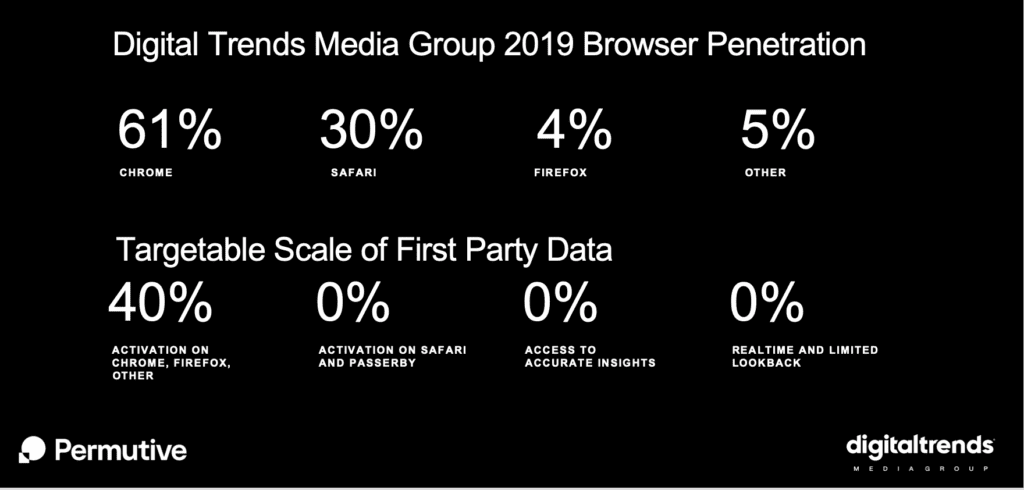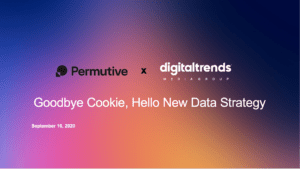
Long before Google ever announced doomsday was nearing for the third-party cookie, advertisers had a strong appetite for publishers’ first-party data.
In fact, 96% of advertisers believe that first-party data delivers a real return on investment,” according to data from MightyHive.
This has become even more true amid mounting privacy concerns.
Unfortunately, publishers, feeling unable to deliver what advertisers crave—at scale, continued to rely on third-party data for ad targeting. But the death of the third-party cookie is a significant opportunity for publishers to unlock revenue by focusing on building out a first-party data strategy.
Before a publisher can even start thinking about utilizing their first-party data as an alternative to the third-party cookie though, they need to have a complete understanding of their audience and even more importantly, they need to find the right Data Management Platform (DMP) to help them activate that data.
Digital Trends was a lot like most publishers. Unable to fully activate against audience data because of limitations around third-party cookies in Safari and Firefox, the team knew they were leaving a lot of money on the table. After phases of research and planning, it landed on a solution.
In a recent AdMonsters Webinar with Permutive, Goodbye Cookie, Hello New Data Strategy, Nathan Bell, SVP, Data and Business Analytics and Rachael McCombs, Sr. Director of Ad and Media Operations shared why Digital Trends decided to work with Permutive and how it is developing its first-party data strategy.
“Having a meaningful relationship with your audience built on trust is key to uncovering the value of your first-party data. We spent years cultivating our users’ trust and we understand the value of our audience but there’s still lots of work to do,” explained McCombs.
Data and Ad Ops Coming Together
It’s important that data and ad ops teams come together to plan for the future and how they’ll maximize their first-party data.
“I’m ready for this opportunity,” said Bell. “We’ve been building out the team for the last year-and-a-half, and the conversation started with our strategy around GDPR and CCPA as well.”
McCombs and Bell’s teams started with a period of education into what was going on in the industry (like the deprecation of third-party cookies in Chrome or Apple’s ITP changes) and how those developments would impact their business and ability to target audiences.
“We needed to ask ourselves, What do we have? What are we capable of doing? Do we have complete data? Do we have the right tech?” said McCombs.
As they looked deeper into the Digital Trends audience and their existing technology, the publisher realized how limited their targetable scale of first-party data was, there was also a lack of accurate and real-time insights.
Plus the publisher wanted to gain a stronger position programmatically. “We wanted to unlock PMPs and programmatic guaranteed, but we weren’t positioned to do it well and or at scale. “We knew the scale was there, we just couldn’t get it to work,” said McCombs.
This led the publisher to search for the right DMP partner, with these criteria in mind:
- Speed – the ability to build first-party segments quickly
- Scale – driving data activation at scale across all browsers
- Privacy – compliance with GDPR, CCPA and any other regulation that might pass
It’s table stakes for a DMP to enable the collection, storage and management of your first-party data from a variety of sources like newsletters, web and mobile behaviors, demographics, purchase info. DMPs must also include analytics to show how those segments perform so that campaigns can be optimized to reach the most relevant audiences.
But what if you wanted your DMP to do more as Digital Trends did? What if you needed real-time insights and wanted to guarantee audience activation?
That’s why Digital Trends connected with Permutive with the goal of uncovering 100% visibility into 100% of its audience and increasing scale. and found the right partner who could open up 4-10X of scale.
Unlocking the Power of Edge
“Third-party cookies have shattered the open web into 1000s of publisher-sized pieces and no longer can third-parties aggregate and utilize user data across it,” says Joe Root, Co-Founder and CEO of Permutive.
Since publishers have a direct relationship with their audiences, they are in a position to own the relationship and process the data. It’s a huge revenue opportunity for publishers and an opportunity for them to rebuild the ad tech ecosystem.
But to do this, publishers need the right technology. They need technology that puts privacy first. That’s why Permutive was built on edge computing. Edge computing processes data on or near the source whether it originated instead of in the cloud, thereby minimizing how much data leaves a user’s device and protects their privacy.
Explaining edge computing succinctly on the webinar, Michael Ogunjobi, Customer Success Lead, NA, Permutive, said that Apple Face ID is an example of edge computing. Apple doesn’t store images of your face in a remote location—it’s stored locally on your iPhone for protection.
But privacy isn’t the only benefit of edge computing. Many of the other benefits were critical to Digital Trends developing their first-party data strategy.
With edge, faster processing speed enables publishers to target their passerby traffic in real-time. The technology also allows publishers to build highly-accurate models with access to 100% of data. And the cost of computation is reduced as computation is distributed across free edge resources. Finally, edge computing offers resilience so that processing can continue on device even when the network goes down.
“Cloud-based DMPs have latency issues limiting the ability to target a user,” says Ogunjobi, “With edge computing moving out of the cloud and into the browser speaking directly to the DFP or ad server to identify a user and the latency is gone. Targeting is fast.”
Digital Trends confirmed that there is limited to no impact on page-load speed using edge vs the cloud.
Since working with Permutive, Digital Trends has been able to bring innovative data-first solutions to advertisers. They gained:
- 100% visibility into their audience. (No impression is ever wasted. You fully understand your audience through a holistic view.)
- Custom first-party declared data segments. (Declared data is the holy grail of first-party data segments.)
- Safe first-party data sharing with their advertisers.
- The ability to target users with different messaging based on where they are in a purchase journey
“We moved from having 100s of thousands of users in a segment to millions with Permutive,” said McCombs.
Isn’t this what any publisher wants to achieve?
To watch the full webinar, visit Permutive
Download the presentation by clicking on the image below

